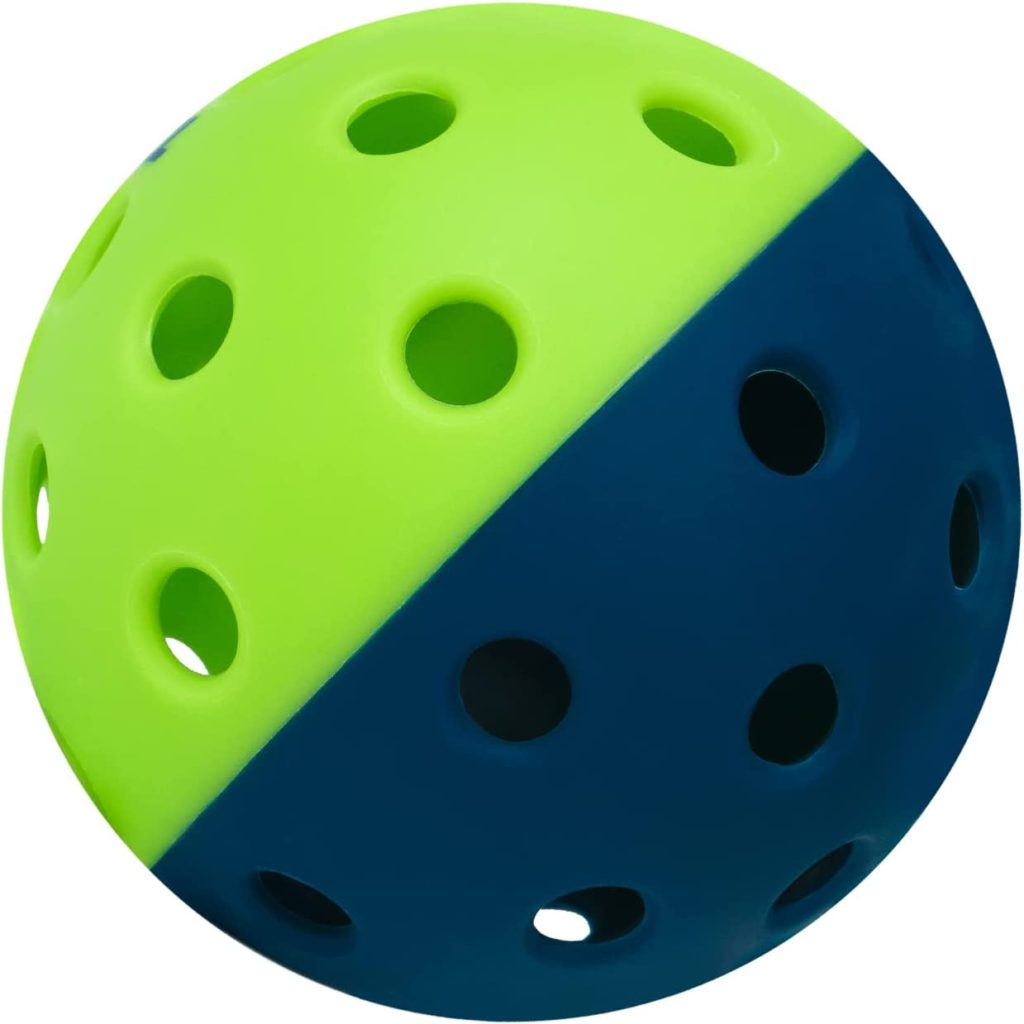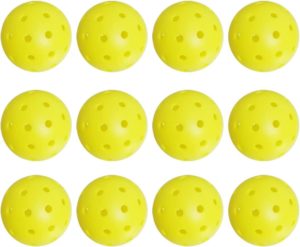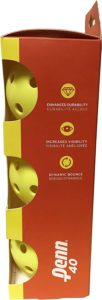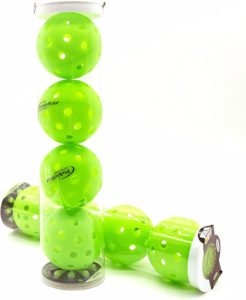When it comes to playing pickleball, the type of ball used can greatly impact the game. Whether you are playing indoors or outdoors, it is essential to understand the difference between indoor and outdoor pickleballs and choose the right ball for your playing environment.
The Construction of Indoor and Outdoor Pickleballs
One of the most significant differences between indoor and outdoor pickleballs is the construction of the ball. Indoor pickleballs are usually made of a softer material, such as foam, which is designed to reduce the amount of bounce and limit the speed of the ball. This makes it easier to control and play with in smaller indoor courts. On the other hand, outdoor pickleballs are made from a more durable material, such as plastic, which can withstand the elements and provide a more consistent bounce.
The Bounce of Indoor and Outdoor Pickleballs
Another major difference between indoor and outdoor pickleballs is the bounce of the ball. Indoor pickleballs typically have a lower and slower bounce, making it easier to control and play with in a smaller court. Outdoor pickleballs, on the other hand, have a higher and faster bounce, making it more challenging to play with in an open outdoor court.
The Size of Indoor and Outdoor Pickleballs
The size of pickleballs also differs between indoor and outdoor balls. Indoor pickleballs are usually smaller in size, making it easier to play with in a smaller court. Outdoor pickleballs, on the other hand, are larger in size and are designed to travel further and faster in an open outdoor court.
Choosing the Right Ball for Your Playing Environment
When it comes to choosing the right ball for your playing environment, it is important to consider the size of your court, the type of surface you will be playing on, and the level of experience of the players. If you are playing in a smaller indoor court, an indoor pickleball may be the best choice. If you are playing in an open outdoor court, an outdoor pickleball may be more appropriate.
Durability
Indoor and outdoor pickleball balls differ in their durability. Indoor pickleball balls are typically made of a softer material that is more susceptible to damage when exposed to the elements or rough surfaces. Outdoor pickleball balls, on the other hand, are designed to be more durable and able to withstand the rigors of outdoor play, including wind, rain, and sun exposure.
Visibility
Another important difference between indoor and outdoor pickleball balls is their visibility. Indoor pickleball balls are often bright in color and designed to be easily visible against light-colored surfaces, such as a white or yellow court. Outdoor pickleball balls, however, are usually more muted in color, making them easier to see against the green of an outdoor court.
Pros of Indoor Pickleball Balls
Consistency: Indoor balls are designed to have a consistent bounce and speed, which helps to maintain a controlled and predictable game.
Control: The slow speed and low bounce of indoor balls allow players to have better control and make precise shots.
Less wind interference: Playing indoors eliminates wind as a factor, providing a more stable environment for players to focus on their game.
Cons of Indoor Pickleball Balls
Reduced visibility: Indoor balls can be difficult to see against dark backgrounds, causing players to lose sight of the ball during play.
Limited durability: Indoor balls can be more prone to damage, as they are typically made of less durable materials.
Reduced power: Indoor balls tend to be slower and have less bounce, making it harder for players to generate power on their shots.
Pros of Outdoor Pickleball Balls
Durability: Outdoor balls are made of more durable materials, making them suitable for outdoor play and more resistant to damage.
Power: Outdoor balls have a higher bounce and speed, allowing players to generate more power on their shots.
Visibility: Outdoor balls are typically brighter in color and easier to see against a variety of backgrounds.
Cons of Outdoor Pickleball Balls
Inconsistency: Outdoor balls can be affected by wind, temperature, and other environmental factors, causing their bounce and speed to vary.
Less control: The faster speed and higher bounce of outdoor balls can make it more challenging for players to maintain control of their shots.
Weather conditions: Outdoor play is subject to weather conditions, such as rain, which can affect the performance and condition of the ball.
Conclusion
In conclusion, the type of ball used in pickleball can greatly impact the game. Whether you are playing indoors or outdoors, it is important to understand the difference between indoor and outdoor pickleballs and choose the right ball for your playing environment. By doing so, you can ensure an enjoyable and competitive game for everyone involved.





